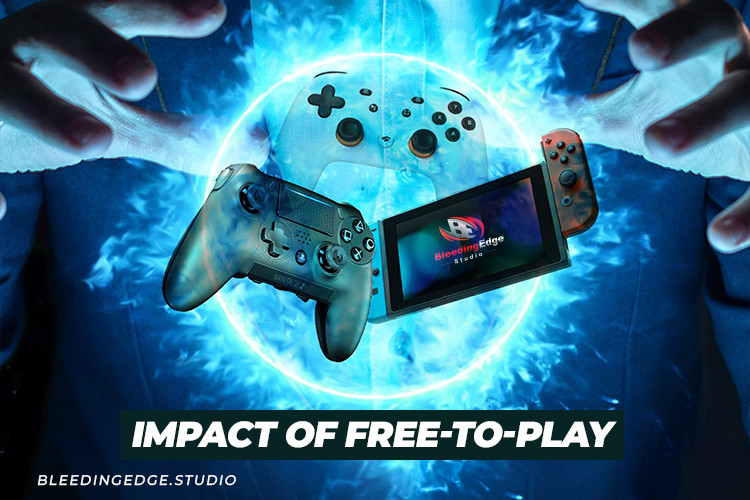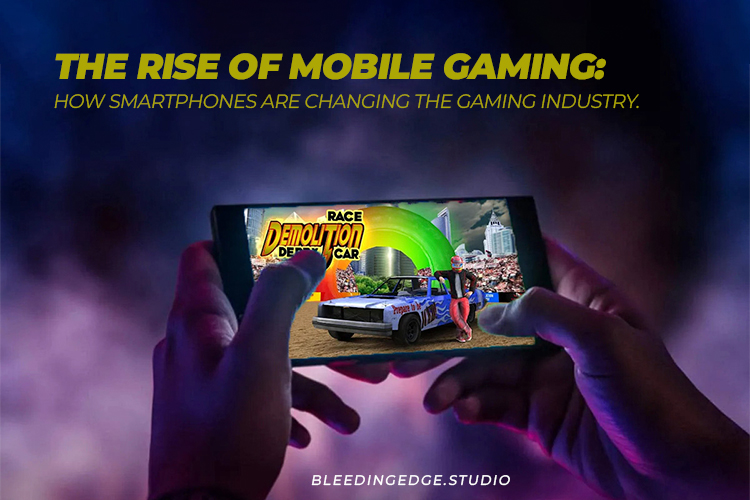The Rise of Mobile Gaming: How Smartphones are Changing the Gaming Industry.
The rise of mobile gaming has been one of the most significant trends in the gaming industry over the past decade. Thanks to smartphones and the increasing power of mobile devices, gaming has become more easily accessible. Mobile gaming has also disrupted the traditional gaming industry, changing how people play and pay for games and how developers create and market games.
In this blog, we will explore the rise of mobile gaming, how smartphones have changed the gaming industry, and what the future of mobile gaming might hold.
The Early Days of Mobile Gaming
Mobile gaming has been around in some form since the 1990s. However, early mobile games were often simplistic and needed more depth and complexity than console or PC games. Games like Snake, Tetris, and Solitaire were among the first popular mobile games, and they were often included as pre-installed apps on early mobile devices.
Mobile games became more complex as mobile devices become more powerful and capable. In 2003, Nokia released its N-Gage gaming phone, one of the first mobile devices designed specifically for gaming. The N-Gage allowed users to download and play games, and it even had a multiplayer mode that allowed users to play against each other over a wireless connection in the rise of mobile gaming.
However, despite the N-Gage’s innovative design, it could have been a commercial success. The device was expensive, and its game library was limited. It also suffered from technical issues and was eventually discontinued in 2005.
The Rise of Smartphone Gaming

The real rise of mobile gaming came with the advent of smartphones. The first iPhone was launched back in 2007, and it revolutionized the mobile industry. The iPhone’s large, high-resolution screen and powerful processor made it an ideal platform for gaming, and developers quickly started creating games for the device’s rise in mobile gaming.
Most games were simple and casual in the early days of smartphone gaming. Games like Angry Birds and Fruit Ninja were among the first popular smartphone games, and they were often free or very cheap. These games were designed to be easy to pick up and play, perfect for short bursts of gaming on the go.
However, mobile games became more complex and ambitious as smartphones became more powerful and capable. Today, mobile games rival the best console and PC games regarding graphics, gameplay, and depth.
One of the advantages of mobile gaming is its accessibility. Almost everyone has a smartphone these days, which means almost everyone has access to a huge library of mobile games. This has democratized gaming and made it more accessible to people who might not have been able to afford a console or gaming PC rise of mobile gaming.
The Impact of Free-to-Play

One of the most significant trends in mobile gaming has been the rise of free-to-play games. Free-to-play games can be downloaded and played for free, but they often include in-game purchases that allow players to buy virtual items or upgrades.
Free-to-play games have become incredibly popular in recent years and have disrupted the traditional gaming industry. In the past, game developers made money by selling games at a fixed price. However, with free-to-play games, developers can offer them for free and make money by selling in-game items or upgrades.
The free-to-play model has proven to be incredibly lucrative for game developers. Some of the most successful mobile games, like Candy Crush Saga and Clash of Clans, have generated billions of dollars in revenue from in-game purchases rise of mobile gaming.
However, the free-to-play model has its controversies. Critics argue that the model encourages developers to design games that are deliberately addictive and manipulative. Some also argue that the model can be exploitative, particularly for children who may not understand the implications of in-game purchases.
The Rise of Esports
Another significant impact of mobile gaming has been the rise of esports. Esports are competitive video game tournaments in which professional gamers compete against each other in front of a live audience or online. Esports has become incredibly popular recently, with millions signing in to watch tournaments such as the League of Legends World Championship and the International Dota 2 Championship.
Mobile gaming has played a significant role in the rise of esports. In the past, esports were dominated by PC and console games like League of Legends, Dota 2, and Overwatch. However, mobile games like PUBG Mobile and Free Fire have become popular esports titles in their own right.
Mobile games have made esports more accessible to a wider audience. Unlike PC and console games, mobile games are more affordable and accessible to people in developing countries. This has allowed esports to reach a global audience and helped increase the popularity of esports as a whole rise of mobile gaming.
The Future of Mobile Gaming

So, what does the future hold for mobile gaming? There are a few trends that are likely to shape the future of the industry.
Firstly, mobile devices will become even more powerful and capable in the coming years. This will allow developers to create even more complex and ambitious games for mobile platforms. We already see this with games like Genshin Impact, a mobile game that rivals console games in graphics and gameplay.
Secondly, we are likely to see more convergence between mobile gaming and other forms of entertainment. For example, we may see more mobile games tied into movies, TV shows, and other forms of media. We already see this with games like Harry Potter: Wizards Unite and Stranger Things: The Game rise of mobile gaming.
Finally, we will likely see more innovation in mobile gaming business models. Free-to-play games will likely remain popular, but new models less reliant on in-game purchases may emerge. For example, subscription-based models may become more popular, where users can pay a monthly fee to access a library of mobile games.
Casual gaming has become more popular:
Mobile games are often designed to be played in short bursts, which makes them perfect for casual gaming. As a result, mobile games have become more popular than traditional PC or console games among casual gamers.
Social gaming:
Mobile games often have social features that allow players to connect, whether it’s through in-game chat, social media integration, or multiplayer modes. This has made gaming a more social experience, which has helped to attract new audiences to the industry’s rise in mobile gaming.
Increased revenue:
The rise of mobile gaming has led to a huge increase in revenue for the gaming industry. In 2020, the mobile gaming industry generated $77.2 billion in revenue, making up more than half of the global gaming market.
Greater accessibility:
Smartphones have made gaming more accessible to people who may not have had an approach to gaming before. For example, people who live in areas without access to consoles or high-end PCs can still play games on their smartphones.
Augmented reality:
Mobile devices can also use augmented reality (AR) technology to enhance the gaming experience. Games like Pokemon Go and Ingress use AR to create a more immersive and interactive gaming experience.
Cross-platform play:
Some mobile games allow cross-platform play, meaning players can play the same game on devices like smartphones, PCs, or consoles. This has helped to break down barriers between different gaming platforms and has created a more unified gaming experience rise of mobile gaming.
Accessibility for people with disabilities:
Mobile gaming has also made gaming more accessible for people with disabilities. Many mobile games have adjustable font sizes, color-blind modes, and assistive touch controls, making gaming more accessible to people with visual, hearing, or physical impairments.
In conclusion, the emergence of mobile gaming has deeply impacted the gaming industry, and smartphones have played an important role in this trend. As technology continues to evolve, we also hope to see even more disruption and innovation in the industry, with mobile gaming leading to the rise of mobile gaming.
Conclusion
The rise of mobile gaming has been one of the most significant trends in the gaming industry over the past decade. Smartphones have made gaming more accessible, and mobile games have disrupted the traditional gaming industry.
The impact of mobile gaming has been felt across the industry, from the rise of free-to-play games to the emergence of mobile esports. As mobile devices become even more powerful and capable, we will likely see more innovation and disruption in the industry.
Mobile gaming has democratized gaming, making it accessible to people worldwide. It has also shown us that gaming is not just a hobby but a form of entertainment that can rival movies, TV shows, and other forms of media.
As the mobile gaming industry continues to evolve, it will be interesting to know what new games and business models emerge and how the industry shapes the future of entertainment.

